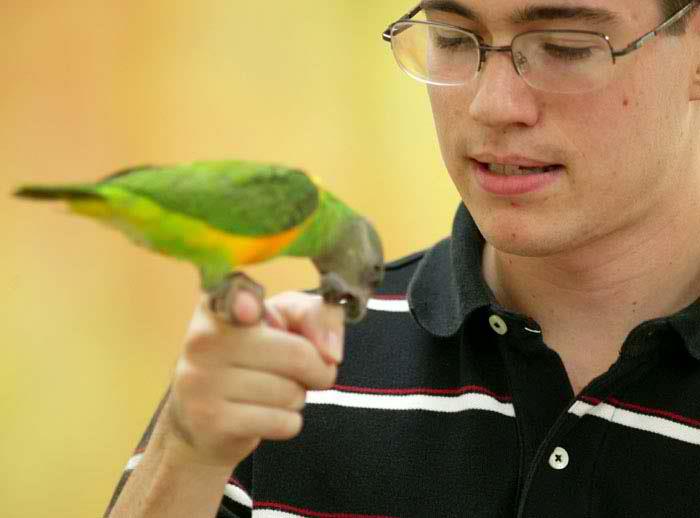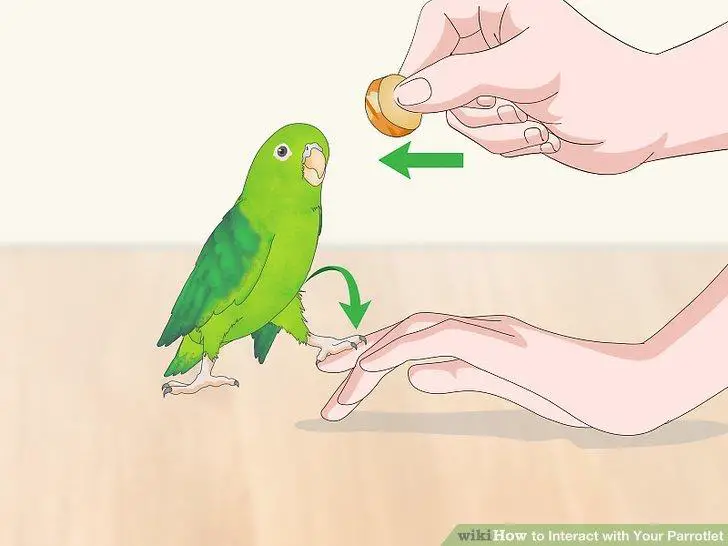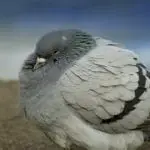The parrotlet is a common name for seven unalike parrot kinds. All of these species are just having at least 6 inches long. These kinds of little parrots are favored among those pet owners who have not have and sufficient space for a big parrot species. These mini-parrots are known to be nippy, especially if they are not well trained or hold in the right way. However, with proper attention, you can prevent your pet from biting you.
Why Parrotlets Bite
It makes no difference in how you are experiencing regarding birds; a parrotlet biting is always upsetting. The birds that sometimes bite of feeling fear, to secure their territory because of strong hormones or when they usually feel misinterpret. Sometimes when they don’t feel well, they also bite.
Biting off a parrot is not a sign that they are mean birds; these are usually like the reaction to them. Parrotlet that is continuously bitten may actually be unintentionally taught to bite. It was like we can involuntarily train our pet parrot to yell, as a pet owner, we can forgetful to teach it to bite. It is a good thing that we can now re-train our pet by ourselves that biting is truly unacceptable.
How to Prevent Parrotlet Biting
Avoiding parrot bites is the best way when it comes to handling our pets. We need to observe our parrotlet’s body language to understand, or in this way, your pet may communicate with you. When you identify what your pet has been trying to tell you when it bites, you may use some productive ways to avoid the parrot bite. It’s just the same as some other techniques that we usually use when we are dealing with those toddlers that their speech is hard to understand.
Read the Body Language
You must know your parrot’s body language. If you already learn about the body language of your pet, you already know about its mood until before you try to hold it. The feeling of scared parrotlet cannot usually say to its owner regarding how they feel, but they always show some signs to tell us how they feel. Generally, there are a number of indications, which consist of hissing, lunging, feather tousles, eye pinning, and head bobbing.
Take Note Biting Habits
Do a practice that can eventually deflect the scared parrotlet. Make a lot of time to make a list when your pet is often bitten. Once you already know what kind of circumstances that enrage your pet to bite, you may now predict a possible behavior disorder and energetic plan on how to prevent it.
Proper Handling
If you hold your parrotlet and it starts to bites, make it a point to practice shaking your hand when handling it. Once you see a bite that is about to come, draw the attention of your pet from biting to balancing. You are required to move recklessly enough your pet to the fleet and throw the bird off balance. Another way to safely distract your pet is just by simply blowing its face.
Stick Training
Another way to prevent parrotlet from biting is stick training. Stick training is another example of a good way or even a pet sitter to prevent parrotlet’s biting. Instruct your pet to step up onto a stick. Usually, one of the favorite supplies of every parrot is the percher.
Just ensure that you instruct the bird to connect on getting up the stick with joy and to withhold the parrot from engaging from its biting behavior. Also, if your bird gets on the stick, say a word tenderly to it then give them a treat.
Generally, it is not said to be unusual to unintentionally teach our parrotlet to bite. Instead, it is just like our human reaction into the parrot’s method of communicating. When we react as yell to the parrot bite, it sounds a lot like the way that parrots transmit about what they want to say. The parrot feels that it is already perceived your reaction as a prize because they got what they wanted.
Clicker Training
Your pet might want to behave as expected, try a clicker training that goes with a treat to communicate to your pet on what exactly the behavior that you want then give them a reward. Click the clicker as soon as your pets already do what you expect them to perform. It gives them more sensory satisfaction when they already hear the clicker that follows the treat. This may become positive training for both of you, and they refrain from biting.

Other Tips to Prevent Parrotlet Biting
Is your pet always feel like fearful, or it may like hormonal, nesting, or being territorial? Observe and learn to know the situations when you’re pet tends to bite most. Once you already know why your pet is biting, then that is the time that you can make a plan to stop it from biting.
Here are some other helpful tips to avoid parrotlet biting:
1. You may avoid your pet’s bite as much as possible with some sidetracking ways like step up on the stick or the percher. You may also try to put a treat in the food cup if you place your parrotlet in its cage. Keep in mind that every time that your pet bites you, then it’s the parrot training chance to refine biting ways.
2. Aim an idea in all handling situations that prior to attracting your bird. Resolve how your pet has behaved in some recent situations of similar handling. For example, when your pet is under the stage where it doesn’t want to go on into its cage, try to let it watch first that you put a treats in its cup, for them to put back in its cage in a short term solution. While the example of a long-term solution is to work for your prevention in the biting behavior of your pet, teach your pet to get in and out of its cage.
3. Provide immediately a reward like treats for your pet so that it chooses not to bite.
Immediately reward your pet on every level you may think of, such as sight, hearing, taste, smell, and touch. Give them a sweet talk, let them taste their favorite treats, provide them with their favorite scritches. So, for example, plan a time for bird training that goes with a treat dispenser.
4. When your pet notices that you have with you the training device, then reward it at a sensory level. Your birds once it surely hears the click, then it thinks and smells the treats. And lastly, do not forget to start training your pet with a positive and happy vibe. Try to invest some affordable training devices for you to train them easier. Parrots are known to be smart that you surely notice the result for a very minimum time.
Conclusion
If you already recognize what the circumstances, why you’re pet tends to bite, then start using the clicker training to stop it. Even sometimes, your pet may still bite occasionally. You need to think about what you can react when the inevitable may happen. Always keep in mind that prevention is the bird training way of choice.



